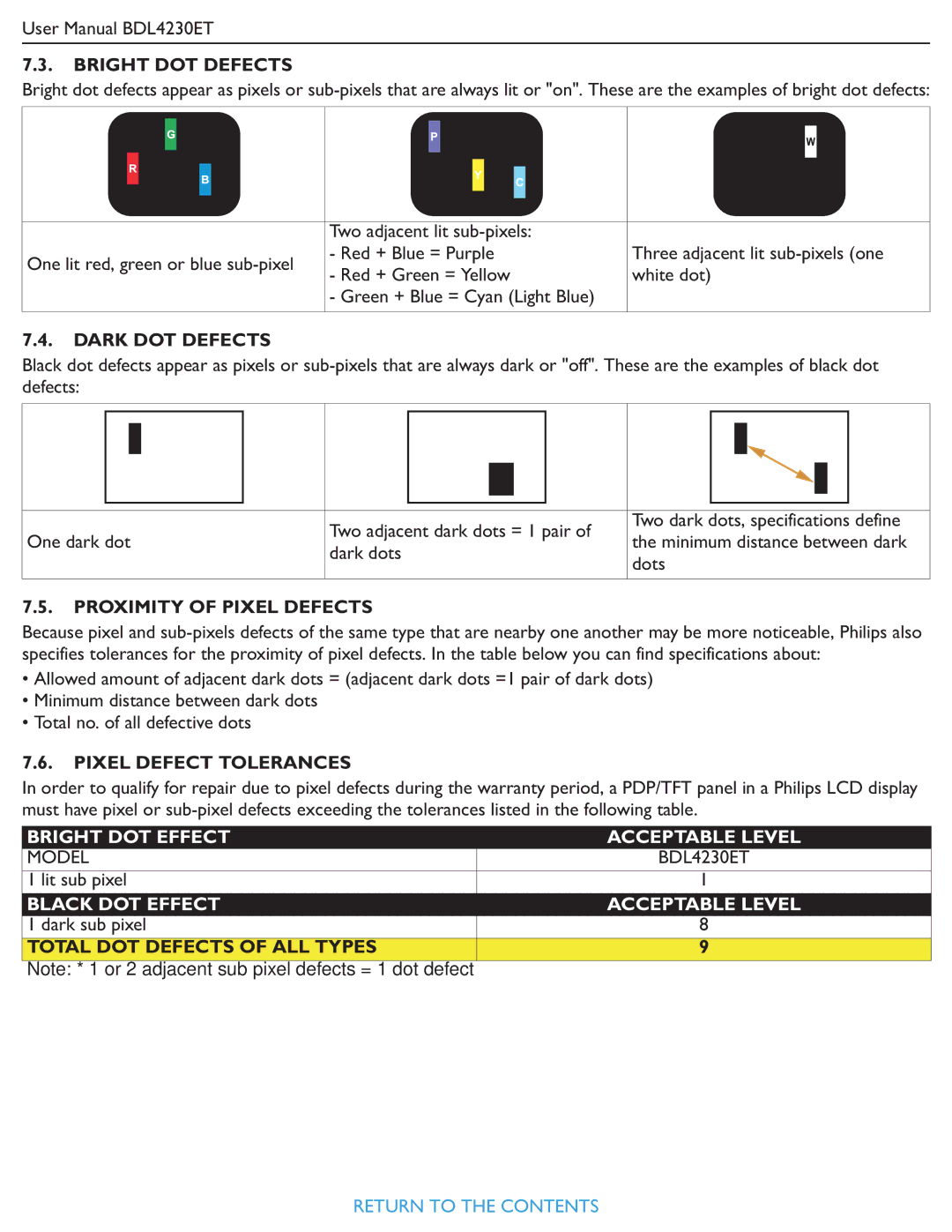
User Manual BDL4230ET
7.3.BRIGHT DOT DEFECTS
Bright dot defects appear as pixels or
One lit red, green or blue
Two adjacent lit
-Red + Blue = Purple
-Red + Green = Yellow
-Green + Blue = Cyan (Light Blue)
Three adjacent lit
7.4.DARK DOT DEFECTS
Black dot defects appear as pixels or
One dark dot
Two adjacent dark dots = 1 pair of dark dots
Two dark dots, specifications define the minimum distance between dark dots
7.5.PROXIMITY OF PIXEL DEFECTS
Because pixel and
•Allowed amount of adjacent dark dots = (adjacent dark dots =1 pair of dark dots)
•Minimum distance between dark dots
•Total no. of all defective dots
7.6.PIXEL DEFECT TOLERANCES
In order to qualify for repair due to pixel defects during the warranty period, a PDP/TFT panel in a Philips LCD display must have pixel or
BRIGHT DOT EFFECT | ACCEPTABLE LEVEL |
MODEL | BDL4230ET |
1 lit sub pixel | 1 |
BLACK DOT EFFECT | ACCEPTABLE LEVEL |
1 dark sub pixel | 8 |
TOTAL DOT DEFECTS OF ALL TYPES | 9 |
Note: * 1 or 2 adjacent sub pixel defects = 1 dot defect |
|
